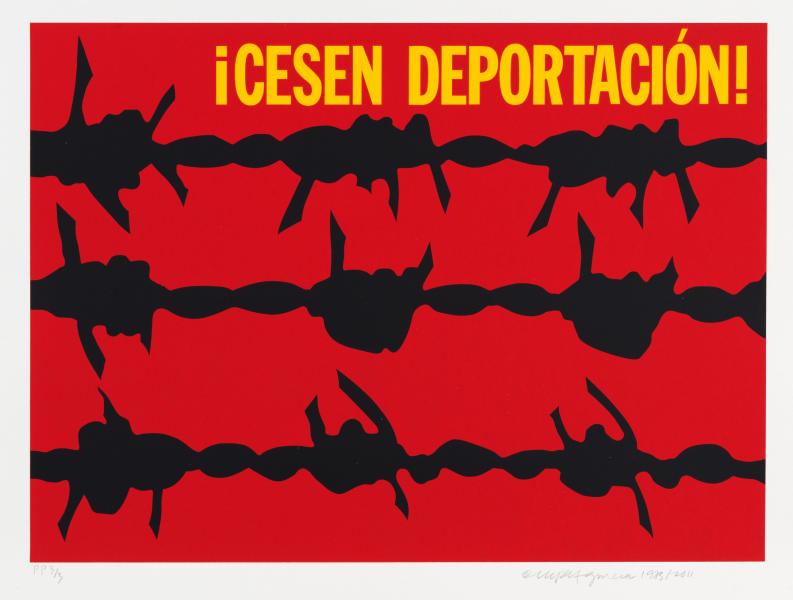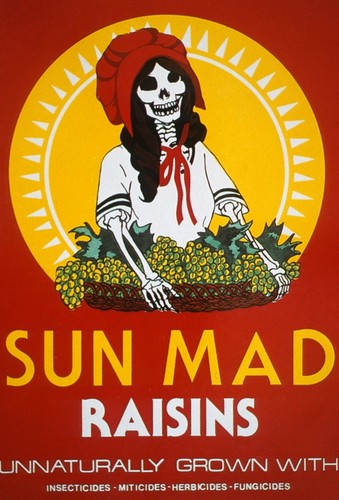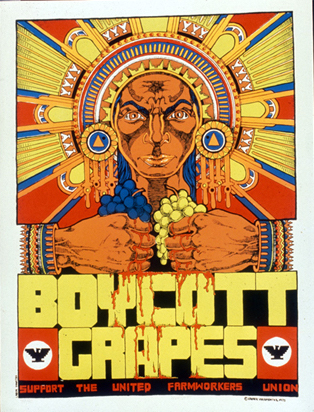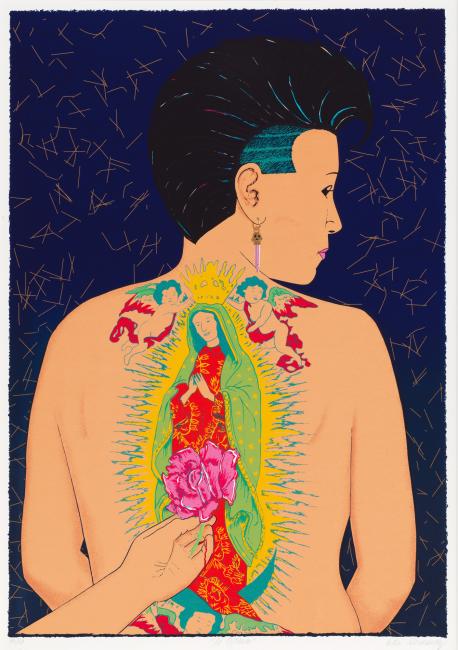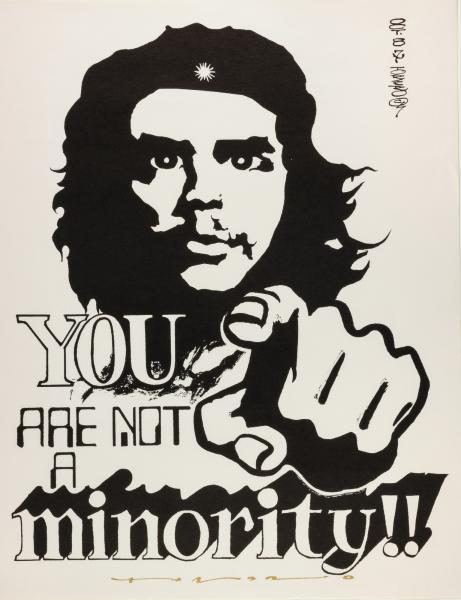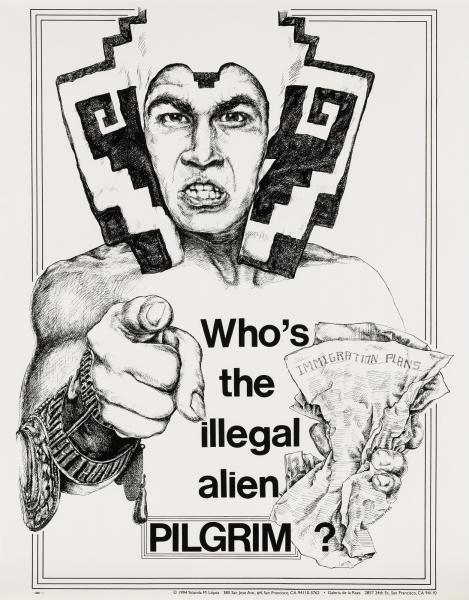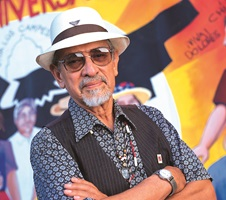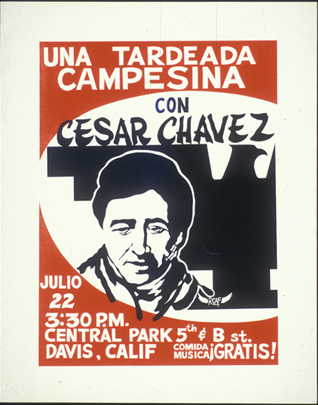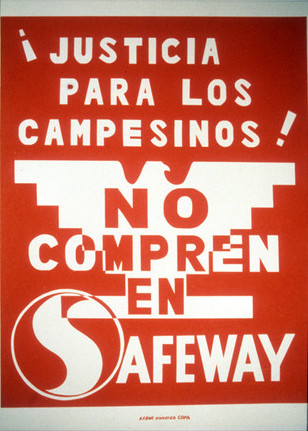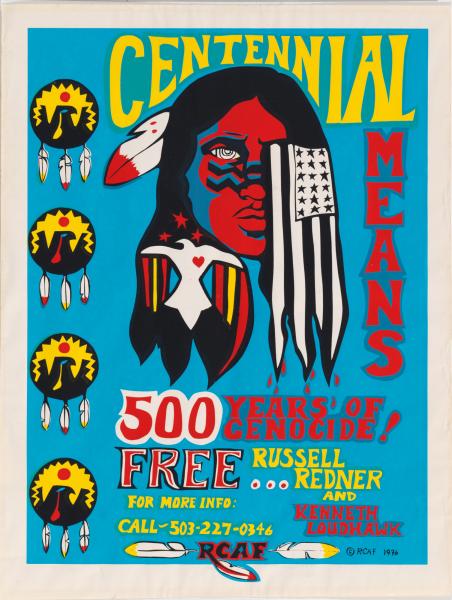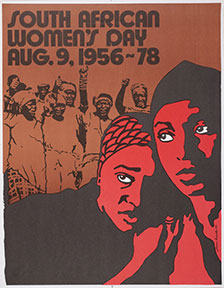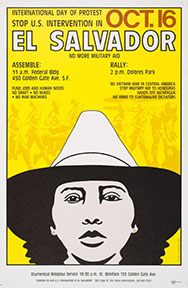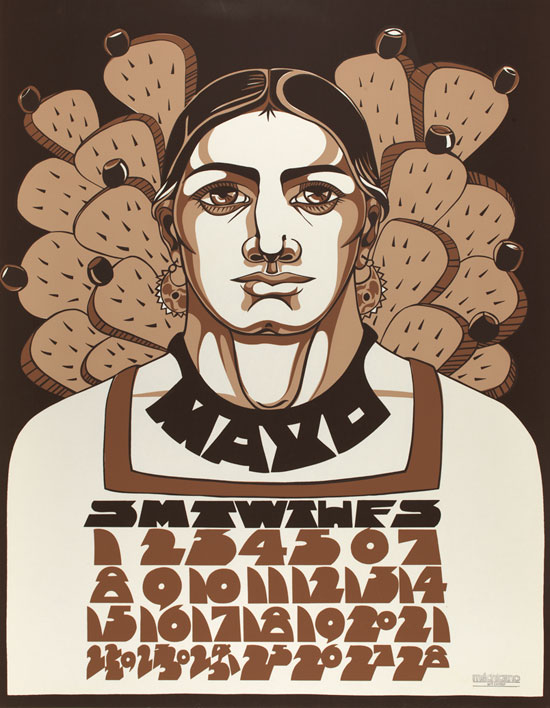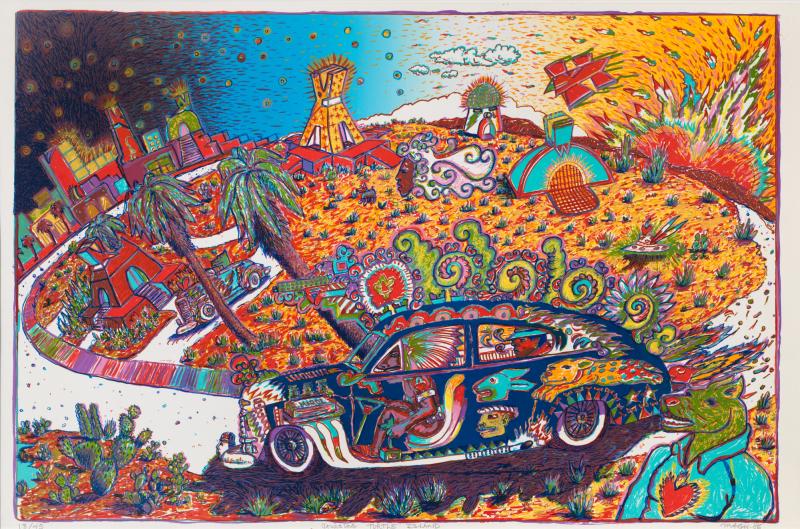
Lujan, Gilbert "Magu." Cruising Turtle Island. 1986. screenprint on paper, Smithsonian American Art Museum
"The poster historically has always been a vehicle for disseminating information to people. I think even the relationship has changed somewhat now because of the internet and the way people can disseminate information. But they are still being used for political rallies and so forth. They’re still used for that because people can basically distribute them and they can carry them during the rally. Then afterwards people can still post them up in their homes or in their windows. The life of the poster can go on for longer than the poster itself."
- Juan Fuentes, Chicano artist, Telephone Interview, 2021.
